#daruma-dera
Explore tagged Tumblr posts
Text


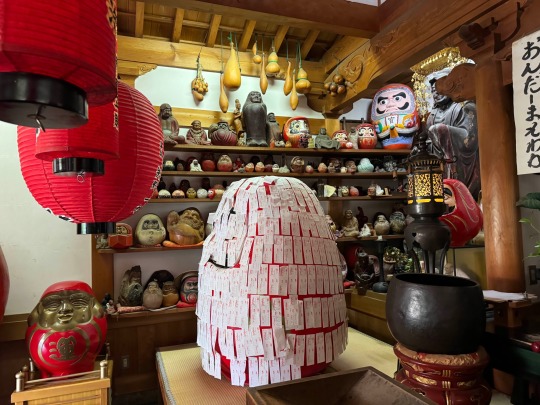
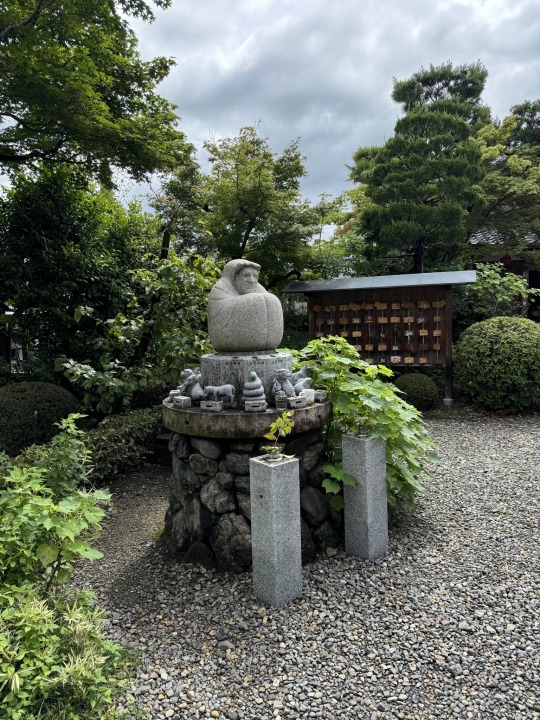

#credit to my lovely friend AK <3#he’s not really on socials and deffo not here but her work can’t go unappreciated!!#daruma#shinto#法輪寺#達磨寺#神道#daruma-dera#darumadera#daruma doll#hourin-ji#hourinji#hōrin-ji#hōrinji#kyoto#達磨#京都#dolls
2 notes
·
View notes
Text










京都 達磨寺(法輪寺) 🍁紅葉2024🍁
kyoto daruma-dera 🍁autumn leaves🍁
135 notes
·
View notes
Photo

(via KYOTO (The first day - Obiettivi e makgeolli )
Nei viaggi lunghi leggevo o mi perdevo nell'osservare la "fauna" umana che li riempiva e svuotava a ogni stazione.
#bodhidharm#daruma ikka#daruma dera#a4a diary#diversamente intelligente#ema giapponesi#giappone#horin-ji temple#izakaya#japan#kinkaku-ji temple#kyoto#lancio della moneta portafortuna#makgeolli#nippon biru#padiglione d'oro#sekimori ishi#viaggi#viaggio in giappone
0 notes
Text
Hanazura Inari Shrine: A Stunning Shrine on the Cliffside 鼻顔稲荷神社:断崖に立つ絶景の稲荷神社
Hanazura Inari Shrine in Saku City, Nagano Prefecture, is famous for its brilliant red shrine building perched on the cliffs of the Yukawa River. The shrine’s unique architectural style, known as “kengai-zukuri,” is reminiscent of Kyoto’s famous Kiyomizu-dera, offering visitors a breathtaking view.

Founded during the Eiroku era (16th century), the shrine enshrines a spirit from Fushimi Inari Taisha in Kyoto. Its main deity, Ukanomitama-no-Mikoto, is believed to bless people with prosperity in business, family safety, and academic success.

The grounds also feature charming sights such as a “hugging fox” statue, symbolizing child-rearing, and the “paired trees,” known for bringing good luck in love. In February, the shrine hosts the lively “Hatsu-uma Festival,” where visitors enjoy a traditional Daruma fair and sacred fire rituals.

It’s about a 20-minute walk from Iwamurada Station. Don’t miss the beautiful cherry blossoms in spring or autumn foliage.
Check out my other blog too!
You can find more photos on my Pinterest too!

長野県佐久市にある鼻顔(はなづら)稲荷神社は、湯川の断崖に建つ朱塗りの社殿で知られています。まるで京都の清水寺を彷彿とさせる「懸崖造り(けんがいづくり)」の美し���神社で、訪れる人々に強い印象を残します。

この神社は永禄年間(16世紀)に創建され、京都・伏見稲荷大社の分霊を祀っています。主祭神は宇迦之御魂命(うかのみたまのみこと)で、商売繁盛、家内安全、学業成就などのご利益があるとされています。
境内には子育ての象徴とされる抱き狐像や、縁結びのご利益がある「相生の樹」など、見どころも豊富です。2月には「初午祭(はつうまさい)」が行われ、だるま市や奉焼祭が多くの人でにぎわいます。

アクセスはJR岩村田駅から徒歩20分ほど。紅葉や桜の季節もおすすめです。
163 notes
·
View notes
Text
This is ‘Daruma Otoshi,’ a traditional Japanese toy. It’s easy to try and always a fun way to liven things up.
これは『だるま落とし』で、日本の昔ながらの玩具です。とても簡単に挑戦できて、盛り上がる遊びです。
『AriHana Kyoto』
You can enjoy traditional Japanese games such as origami and kendama.
Located near Kiyomizu-dera Temple.
No reservations required.
Open from 10:00AM to 6:00PM. (Last admission is at 5:00PM.)
Closed on Tuesdays.
1 note
·
View note
Photo

Antique Massive Huge Extra Large Wood Wooden DARUMA Figure Statue JAPAN Buddhism
Antique
Large at 11.75" T x 8" W and 9.8 Lbs
Made of a fine / tight grain wood.
Daruma doll
A Daruma doll (Japanese: 達磨, Hepburn: daruma) is a hollow, round, Japanese traditional doll modeled after Bodhidharma, the founder of the Zen tradition of Buddhism. These dolls, though typically red and depicting the Indian monk, Bodhidharma, vary greatly in color and design depending on region and artist. Though considered a toy by some, Daruma has a design that is rich in symbolism and is regarded more as a talisman of good luck to the Japanese. Daruma dolls are seen as a symbol of perseverance and good luck, making them a popular gift of encouragement.[1] The doll has also been commercialized by many Buddhist temples to use alongside the setting of goals.
Use[edit]
This section needs expansion. You can help by adding to it. (February 2018)
When purchased, the figure's eyes are both blank white. The owner selects a goal or wish and paints in the left eye of the figure's two eyes with Chinese or Japanese ink. Once the goal is achieved, the right eye is filled in.[2]
Bodhidharma[edit]
Bodhidharma, woodblock print by Yoshitoshi, 1887
Bodhidharma was a Buddhist monk who lived during the 5th/6th century CE. He is traditionally credited as the transmitter of Ch'an (Zen) to China. Little contemporary biographical information on Bodhidharma is extant, and subsequent accounts became layered with legend.[3] According to one tradition, Bodhidharma gained a reputation for, among other things, his practice of wall-gazing. Legend claims that he sat facing a wall in meditation for a period of nine years without moving, which caused his legs and arms to fall off from atrophy.[4] Another popular legend is that after falling asleep during his nine-year meditation he became angry with himself and cut off his eyelids to avoid ever falling asleep again.
According to the principal Chinese sources, Bodhidharma came from the Western Regions, which refers to Central Asia but may also include the Indian subcontinent, and was either a "Persian Central Asian" or a "South Indian ... the third son of a great Indian king."[5][6] Throughout Buddhist art, Bodhidharma is depicted as an ill-tempered, profusely bearded, wide-eyed non-Chinese person. He is referred as "The Blue-Eyed Barbarian" (Chinese: 碧眼胡; pinyin: Bìyǎnhú) in Chan texts.
History and commercialization[edit]
A wooden mold for a papier-mâché Maneki-neko and Okiagari-Koboshi Daruma figure from the Edo Period, 18th century. Brooklyn Museum.
The current popular symbolism associated with Daruma as a good luck charm in part originated at Shorinzan Daruma Temple, in the city of Takasaki (Gunma Prefecture, north of Tokyo). Josef Kyburz, author of "Omocha": Things to Play (Or Not to Play) with, explained that the founder of Daruma-Dera would draw New Year’s charms depicting Bodhidharma. The parishioners would keep these charms to "bring happiness and prosperity and ward off accidents and misfortune".[7]
It is believed that the Daruma figurine then originated from this region when the ninth priest, Togaku, found a solution to handle the constant requests of the parishioners for new charms. The charms were always given with an effectiveness of one year, so the people required new ones every year. He solved this by entrusting them with the making of their own Daruma charms near the beginning of the Meiwa period (1764–72). The temple made wooden block molds for the people to use. The peasants then used these molds to make three-dimensional papier-mâché charms.[8]
Kyburz notes that though it is unknown when the Daruma figurine combined with the tumbler doll; the two were well recognized as synonymous by the mid-19th century. The doll quickly grew in popularity, becoming a mascot of the region. This was due greatly in part to fact that the majority of the families were silk farmers, a crop which requires a great deal of luck for success.[7]
There is an annual Daruma Doll Festival (達磨市, daruma-ichi) held by the city of Takasaki in celebration of being the proclaimed birthplace of the Daruma doll. The celebration is held at the Shorinzan, the name of Takasaki's "Daruma-Dera". According to the Takasaki city website, "Over 400,000 people from all over the Kanto Plain come to buy new good-luck dolls for the year. Takasaki produces 80% of Japan's Daruma dolls."[9] The festival also features a 24-hour reading of sutras by the Shorinzan monks for world peace.
Physical features and symbolism[edit]
Daruma dolls at Shōrinzan Daruma-ji, Takasaki, Japan
Daruma’s design, particularly the shape, color, eyes and facial hair, each have its own history and symbolic meaning.
Shape[edit]
Darumas are still usually made of papier-mâché, have a round shape, are hollow and weighted at the bottom so that they will always return to an upright position when tilted over. In Japanese, a roly-poly toy is called okiagari, meaning to get up (oki) and arise (agari). This characteristic has come to symbolize the ability to have success, overcome adversity, and recover from misfortune.[7] In Japanese popular culture on cards, banners and books, Daruma is often illustrated alongside the phrase "Nanakorobi Yaoki" (七転八起), translated to mean "seven times down, eight times up". While some traditional Daruma dolls have flat bases, the Sankaku or Triangle Daruma (三角だるま) is constructed from a rolled cardboard cone attached to a rounded clay base so that it always stands straight when tilted.[10]
Triangle Darumas made by Tokushiro Imai (1895-1995), who developed their design in 1956.[11]
The tumbler doll style is similar to an earlier toy called the Okiagari Koboshi, a little self-righting monk which was popular in the Kinki region during the mid-17th century. The original okiagari toy, however, is said to have been introduced from Ming China around 1368–1644.[12]
Color[edit]
Non-traditional neon pink Daruma dolls in Ibaraki.
Though it is not certain, the origins of Daruma's traditional red coloring probably came from the color of priest's robes. Reliable sources in English are hard to find, but one Japan-based website cites this red as being the "color of the robe of a high-ranking priest.[13] The author then concludes that "since Daruma was the founder of the Zen Sect, he must have worn a red robe." The art historian James T. Ulak has documented a history of depictions of the Bodhidharma wearing lavish red robes, prior to representations of him as a doll, in an article entitled "Japanese Works in The Art Institute of Chicago."[14]
By virtue of his red robes, Daruma has come to play a role in recovering from sickness. During the late Edo period (1603-1868), red was believed to have a strong association to smallpox. Hartmut O. Rotermond, author of Demonic Affliction or Contagious Disease?, describes that in Edo and surrounding cities, there were many outbreaks of measles and smallpox. In present-day Japan, there are many red shrines dedicated to a God of Smallpox, which had a particular liking for red. These shrines were built in response to those outbreaks.[15] Believing that the God of smallpox, if pleased, would spare the afflicted child, the Japanese would often stretch out ropes around the house strung with red paper strips, have the child wear a red robe, and make a small altar for the God to put talisman-like Daruma figurines on.[16] These precautions were also used to warn others that sickness was in the house, and to encourage cleanliness around the sick. The red of Daruma, however, was used to pacify the God, while the image of okiagari was to encourage the patient to recover as quickly as they fell ill.[7] Daruma are also sold as a set of five colors – blue, yellow, red, white and black – called Goshiki Daruma. These days, daruma can also be found in colors other than red, including gold, which is meant to bring luck in financial matters.
Eyes[edit]
A daruma doll with one eye filled in for wishing
The eyes of Daruma are often blank when sold. Monte A. Greer, author of Daruma Eyes, described the "oversized symmetrical round blank white eyes" as a means to keep track of goals or big tasks and motivate them to work to the finish. The recipient of the doll fills in one eye upon setting the goal, then the other upon fulfilling it. In this way, every time they see the one-eyed Daruma, they recall the goal. One explanation how this custom started says that in order to motivate Daruma-san to grant your wish, you promise to give him full sight once the goal is accomplished. This practice might also have something to do with the "enlightenment", the ideal attainment of Buddhism. This custom has led to a phrase in Japanese translated as "Both Eyes Open". Referring to "opening" the second eye, it expresses the realization of a goal.[17] Traditionally, the Daruma was purchased as a household item, and only the head of the household would paint in the eyes.[18]
One example of this is politicians during election time. Political parties have often been shown at their headquarters with large Daruma dolls and amulets purchased from local temples as a prayer for victory. This practice was highlighted in a 1967 article in Time magazine: "Last week, in the Tokyo headquarters of Japan's ruling Liberal Democratic Party, Premier Eisaku Satō dipped a sumi brush into an ink stone and with swift strokes daubed in the dark right eye of his Daruma. 'The eyes,' he remarked when he had finished, 'are as big as my own.'"[19]
The Matsukawa Daruma (松川だるま) is produced with the eyes already painted, with the purpose of watching over a family's household.[20] These intricate figures are more slender than traditional Daruma and typically feature blue coloring and a base molded (or simply painted) in the form of the ship that transports the Seven Lucky Gods.[21]
Facial hair[edit]
Daruma's facial hair is a symbolic representation of the animals well known in Asian culture to embody longevity: the crane and the tortoise. The eyebrows are in the shape of a crane, while the cheek hair resembles the shell of the tortoise. A Japanese-based website states that originally, there was a snake or dragon depicted across the moustache and cheeks, but was changed to tortoise to emphasize the desire for longevity.[22] In this way, Daruma was designed to match the Japanese proverb "The crane lives 1000 years, the tortoise 10,000 years".
Daruma burning[edit]
Burning of the Daruma
At the end of the year, all the Daruma are brought back to the temple they were purchased from for a traditional burning ceremony.[17] This ceremony, called the daruma kuyō (だるま供養), is held once a year, usually right after New Year's Day. The most renowned of these events are held at the Nishi-Arai Daishi Temple (Tokyo), and the Dairyū-ji Temple (Gifu). At these events, people bring the Daruma figures they had used that year to the temple. After expressing gratitude to them, they turn them over to the temple and buy new ones for the next year. All of the old Daruma figures are burnt together in the temple. After a solemn display of the monks' entry, reading of the sutras and blowing of horns, the tens of thousands of figurines are then set aflame.
Feminine representations[edit]
Daruma dolls also come in the form of Princess Daruma (姫だるま, hime daruma) and Lady Daruma (女だるま, onna daruma). This contrasts greatly with traditional representations of Bodhidharma, who, accredited as the father of many martial arts, has traditionally been depicted as very masculine with rough facial hair.[23] H. Neill McFarland, Professor of Theology, discusses the feminine representations of Bodhidharma in his article Feminine Motifs in Bodhidharma Symbology in Japan. The answer to this anomaly lies in the social changes at the time, developing in the Edo Period. The class distinctions placed the merchants at the bottom, who in turn developed their own culture focusing on humor and poking fun at what those of higher class held sacred. This is evident in the depiction of Bodhidharma as a prostitute since prostitutes displayed the same "okiagari" resilience. Famous pieces of art depicting Bodhidharma were also redrawn with a woman in his place.[23]
With the inception of the Daruma doll, the Onna Daruma doll quickly followed. Though the aforementioned examples of feminine motifs of Bodhidharma were satirical, the doll forms maintain the same wholesome image of a bringer of good luck.[24]
Children's games[edit]
Daruma Otoshi. The Daruma character, hammer and rainbow-colored pieces.
Many children's games make mention of Daruma. In Japanese, snowmen are called "Yukidaruma" (Japanese: 雪だるま), literally snow daruma. Possibly because the shape is related to Daruma, they usually only have two sections instead of three.[1] Darumasan ga Koronda is an equivalent to the American Red Light/Green Light game. Daruma Otoshi (だるま落とし) is a traditional game played with a daruma doll in five pieces, usually in the colors of the rainbow, from top to bottom: head – a man's face, blue, green, yellow, red. The game is played by using a small hammer to hit each of the colored pieces, from bottom to the top, without letting the pieces fall during the game.
0 notes
Photo
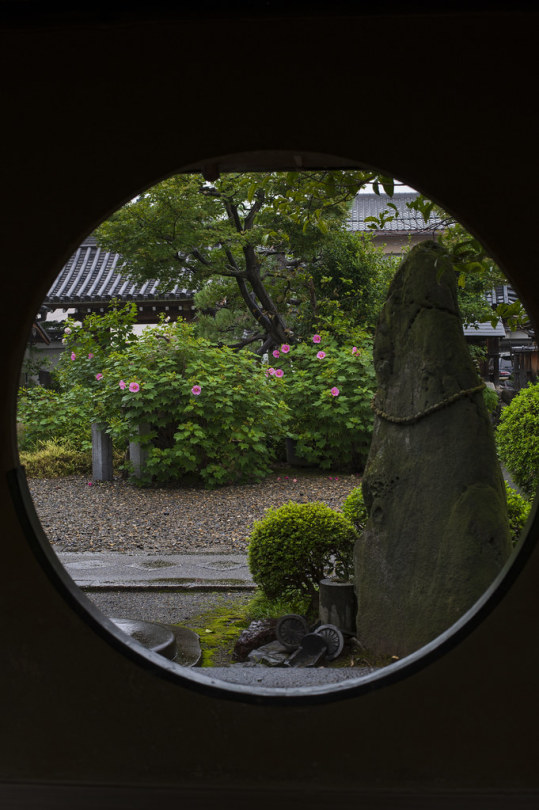
Window / 窓 by Patrick Vierthaler
29 notes
·
View notes
Photo

Daruma-dera (Horin-ji). Photography by Patrick Vierthaler
98 notes
·
View notes
Video
Large Blue Daruma Doll at Daruma-dera Temple | Kyoto, Japan by Goat Tree Designs Via Flickr: Free to use when crediting to www.goattreedesigns.com with a do-follow hyper link. Large blue daruma doll at Horinji Temple in Kyoto, Japan. The temple has so many daruma dolls on display that is often to referred to as Daruma-dera in Kyoto, and as Daruma-dera temple among westerners. Dera is an iteration of tera, which means temple.
27 notes
·
View notes
Video
Temple Building 市内の寺院 by Patrick Vierthaler Via Flickr: Location: Daruma-dera (Horin-ji).
#Kyoto#Japan#Darumadera#Daruma#horinji#hourinji#temple#tempel#Zen#autumn#fall#foliage#Herbst#Herbstlaub#京都#紅葉#秋#晩秋#もみじ#禅#寺#お寺#寺院#お庭#庭園#だるま寺#達磨寺#法輪寺
0 notes
Video
Kyoto Daruma-dera 京都達磨寺 por Patrick Vierthaler Por Flickr: Formal name "Hourin-ji". Myoushin-ji Sect of Rinzai-School. A small temple in Central Kyoto with a hall dedicated to mystical monk Dharma (jap. Daruma), who became a Japanese lucky charm. 正式名称���法輪寺」。臨済宗妙心寺派。
#Japan#JPN#Kyoto#Kioto#Central#Kansai#Kamigyo-ku#Kamigyo#Daruma#Darumadera#Temple#Dharma#Zen#Rinzai#Rinzai-shu#Hourin-ji#Horin-ji#日本#京都#洛中#上京区#法輪寺#達磨寺#達磨#だるま#臨済宗#妙心寺
6 notes
·
View notes
Photo

法輪寺の別名は「だるま寺」。その名の通り、境内の至る所にだるまさんが! Another name for the Horin-ji is Daruma-dera Temple (Bodhidharma Temple). #京都 #上京区 #法輪寺 #寺 #お寺 #kyoto #horinji #Temple #japan (法輪寺(達磨寺)) https://www.instagram.com/p/BtNGwe7n3i3/?utm_source=ig_tumblr_share&igshid=1ov0i3kytfnke
0 notes
Text

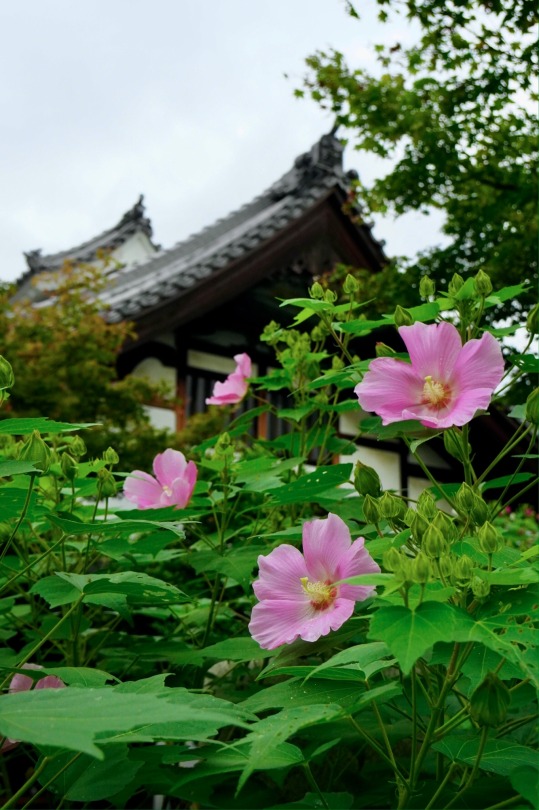


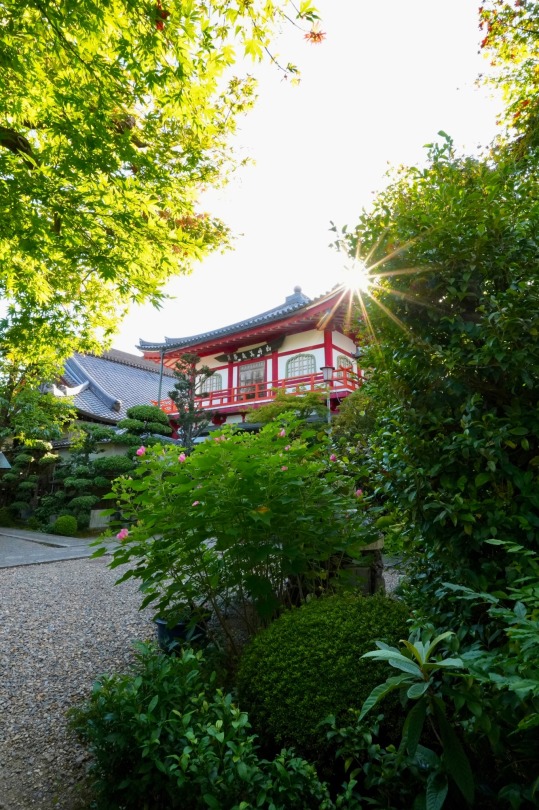
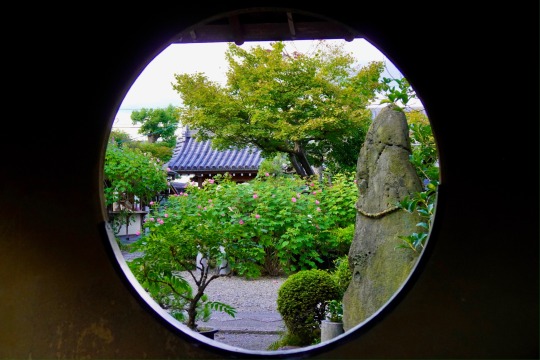
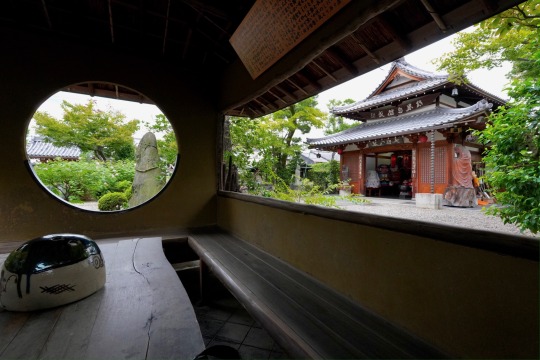
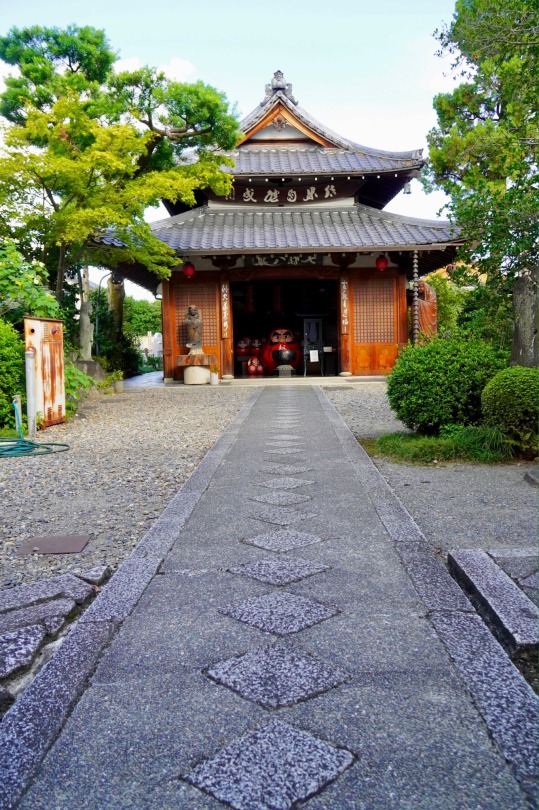
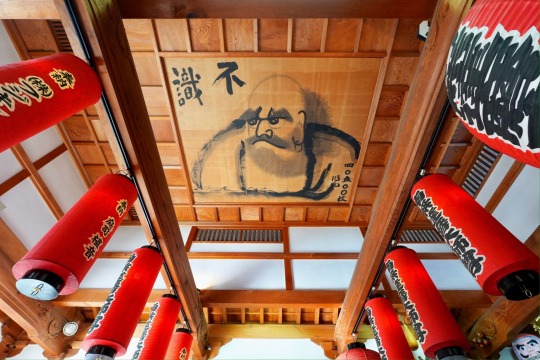
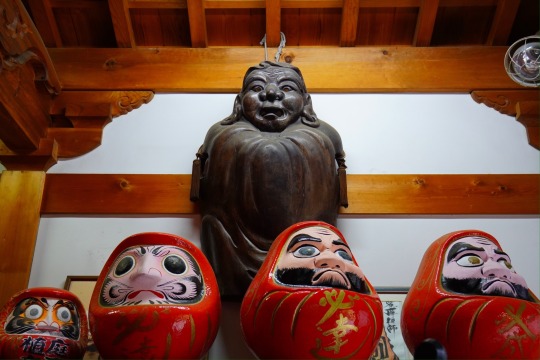
京都 法輪寺(達磨寺) 🌸芙蓉🌸
kyoto horinj(daruma dera)temple
136 notes
·
View notes
Text
The Zen Pagan: Kyoto Bonus: Daruma-dera Visit https://t.co/63hCkmOzKw
0 notes
Text
Daruma Dolls: How Long Can I Keep Mine?
What do you do with a Daruma after you've achieved your goal and colored the second eye? It's a good question, because there is indeed a protocol for daruma, and for good luck charms in general, and a daruma doll offers itself as a wonderful window onto interesting aspects of traditional Japanese culture. But at the same time, as you'll see, there's no need to feel compelled to do any particular thing, and the key is to act according to your own feelings.
Daruma dolls are associated with New Year’s in Japan and are usually bought at this time. 12 months later at the start of the new year they’re taken to a temple where they’re ceremonially burned in a ceremony called Daruma Kuyou, and a new one is bought. So If you happen to live near a Buddhist temple that has such an event and you are so inclined, you might take advantage of it. This is a sort of memorial service that offers a chance to reflect on the year that just ended and express gratitude for the good things it brought. It’s a poignant way to usher in a new year of possibilities, and perhaps to buy a new daruma doll, too! As with other Japanese charms, simply throwing it in the trash is inappropriate.
But having said this, parting with your daruma doll is only an option, not a requirement. The subject of dolls in this context brings hina dolls to my mind as a contrast. Hina ningyo are the set of dolls including an emperor and empress and their court that are displayed at home by families with daughters for Girls' Day, which is celebrated on March 3rd. As lovely as the display is, you’ll be very challenged to find any still out after March 4th, as according to tradition, families that don’t put the dolls back in their storage boxes by the 4th risk late marriages for their daughters!
Daruma dolls don't come with any such caveat and can be kept and displayed indefinitely, if you so choose. One cozy little restaurant that I frequent has one rather large daruma on a shelf on permanent display for each year they’ve been open. It’s a fun way for them to commemorate their years in business and show appreciation to their customers for their shop’s longevity. Obviously they have no fear of incurring bad luck by keeping their menagerie! Now that they’ve been in business for a dozen years or so, they have quite an impressive row of daruma dolls standing sentinel. It won’t be long before they need another shelf!
When we visited Kyoto's Daruma-dera recently, which is a temple here known for its collection of over 8,000 daruma dolls, the priest's wife mentioned one parishioner who kept the same daruma doll for some 30 years, not wanting to part with it. In the end, it was placed in his coffin before his cremation. This underscored for us her belief that there are no hard and fast rules with this, and the story and the beautiful way in which she took the time to relate it to us gave me a deep sense of her focus on the spirit that the dolls are meant to convey rather than details.
So if you prefer to hang onto your daruma after a year has passed, you should by all means do that. One thing to remember is this-display your daruma doll in a place where you can see him, so that you’ll be reminded to take steps, however small, toward the goal you had in mind when you gave him his first eye. He will serve as a gentle reminder of the principles that bring happiness, which is much more valuable than any luck. This is really where the Daruma’s true power lies, after all.
from Kyoto Collection: Latest News http://kyotocollection.com/blog/daruma-dolls-how-long-can-i-keep-mine/
0 notes
Photo

Antique Japanese Japan Wood Wooden Daruma Doll Fine Quality / Detailed BUDDHISM
Antique ~1950s
Master craftsmen made...very fine details
Just enough age and patina to make it all the more mysterious
4" T x 2" W
Daruma doll
31 languages
Article
Talk
Read
Edit
View history
Tools
From Wikipedia, the free encyclopedia
This article possibly contains original research. Please improve it by verifying the claims made and adding inline citations. Statements consisting only of original research should be removed. (June 2013) (Learn how and when to remove this template message)
Daruma doll
A Daruma doll (Japanese: 達磨, Hepburn: daruma) is a hollow, round, Japanese traditional doll modeled after Bodhidharma, the founder of the Zen tradition of Buddhism. These dolls, though typically red and depicting the Indian monk, Bodhidharma, vary greatly in color and design depending on region and artist. Though considered a toy by some, Daruma has a design that is rich in symbolism and is regarded more as a talisman of good luck to the Japanese. Daruma dolls are seen as a symbol of perseverance[citation needed] and good luck[citation needed], making them a popular gift of encouragement. The doll has also been commercialized by many Buddhist temples to use alongside the setting of goals.
Use[edit]
This section needs expansion. You can help by adding to it. (February 2018)
When purchased, the figure's eyes are both blank white. The owner selects a goal or wish and paints in the left eye of the figure's two eyes with Chinese or Japanese ink. Once the goal is achieved, the right eye is filled in.[1][dead link]
Bodhidharma[edit]
Bodhidharma, woodblock print by Yoshitoshi, 1887
Bodhidharma was a Buddhist monk who lived during the 5th/6th century CE. He is traditionally credited as the transmitter of Ch'an (Zen) to China. Little contemporary biographical information on Bodhidharma is extant, and subsequent accounts became layered with legend.[2] According to one tradition, Bodhidharma gained a reputation for, among other things, his practice of wall-gazing. Legend claims that he sat facing a wall in meditation for a period of nine years without moving, which caused his legs and arms to fall off from atrophy.[3] Another popular legend is that after falling asleep during his nine-year meditation he became angry with himself and cut off his eyelids to avoid ever falling asleep again.
According to the principal Chinese sources, Bodhidharma came from the Western Regions, which refers to Central Asia but may also include the Indian subcontinent, and was either a "Persian Central Asian" or a "South Indian ... the third son of a great Indian king."[4][5] Throughout Buddhist art, Bodhidharma is depicted as an ill-tempered, profusely bearded, wide-eyed non-Chinese person. He is referred as "The Blue-Eyed Barbarian" (Chinese: 碧眼胡; pinyin: Bìyǎnhú) in Chan texts.
History and commercialization[edit]
A wooden mold for a papier-mâché Maneki-neko and Okiagari-Koboshi Daruma figure from the Edo Period, 18th century. Brooklyn Museum.
The current popular symbolism associated with Daruma as a good luck charm in part originated at Shorinzan Daruma Temple, in the city of Takasaki (Gunma Prefecture, north of Tokyo). Josef Kyburz, author of "Omocha": Things to Play (Or Not to Play) with, explained that the founder of Daruma-Dera would draw New Year’s charms depicting Bodhidharma. The parishioners would keep these charms to "bring happiness and prosperity and ward off accidents and misfortune".[6]
It is believed that the Daruma figurine then originated from this region when the ninth priest, Togaku, found a solution to handle the constant requests of the parishioners for new charms. The charms were always given with an effectiveness of one year, so the people required new ones every year. He solved this by entrusting them with the making of their own Daruma charms near the beginning of the Meiwa period (1764–72). The temple made wooden block molds for the people to use. The peasants then used these molds to make three-dimensional papier-mâché charms.[7]
Kyburz notes that though it is unknown when the Daruma figurine combined with the tumbler doll; the two were well recognized as synonymous by the mid-19th century. The doll quickly grew in popularity, becoming a mascot of the region. This was due greatly in part to fact that the majority of the families were silk farmers, a crop which requires a great deal of luck for success.[6]
There is an annual Daruma Doll Festival (達磨市, daruma-ichi) held by the city of Takasaki in celebration of being the proclaimed birthplace of the Daruma doll. The celebration is held at the Shorinzan, the name of Takasaki's "Daruma-Dera". According to the Takasaki city website, "Over 400,000 people from all over the Kanto Plain come to buy new good-luck dolls for the year. Takasaki produces 80% of Japan's Daruma dolls."[8] The festival also features a 24-hour reading of sutras by the Shorinzan monks for world peace.
Physical features and symbolism[edit]
Daruma dolls at Shōrinzan Daruma-ji, Takasaki, Japan
Daruma’s design, particularly the shape, color, eyes and facial hair, each have its own history and symbolic meaning.
Shape[edit]
Darumas are still usually made of papier-mâché, have a round shape, are hollow and weighted at the bottom so that they will always return to an upright position when tilted over. In Japanese, a roly-poly toy is called okiagari, meaning to get up (oki) and arise (agari). This characteristic has come to symbolize the ability to have success, overcome adversity, and recover from misfortune.[6] In Japanese popular culture on cards, banners and books, Daruma is often illustrated alongside the phrase "Nanakorobi Yaoki" (七転八起), translated to mean "seven times down, eight times up". While some traditional Daruma dolls have flat bases, the Sankaku or Triangle Daruma (三角だるま) is constructed from a rolled cardboard cone attached to a rounded clay base so that it always stands straight when tilted.[9]
Triangle Darumas made by Tokushiro Imai (1895-1995), who developed their design in 1956.[10]
The tumbler doll style is similar to an earlier toy called the Okiagari Koboshi, a little self-righting monk which was popular in the Kinki region during the mid-17th century. The original okiagari toy, however, is said to have been introduced from Ming China around 1368–1644.[11]
Color[edit]
Non-traditional neon pink Daruma dolls in Ibaraki.
Though it is not certain, the origins of Daruma's traditional red coloring probably came from the color of priest's robes. Reliable sources in English are hard to find, but one Japan-based website cites this red as being the "color of the robe of a high-ranking priest.[12] The author then concludes that "since Daruma was the founder of the Zen Sect, he must have worn a red robe." The art historian James T. Ulak has documented a history of depictions of the Bodhidharma wearing lavish red robes, prior to representations of him as a doll, in an article entitled "Japanese Works in The Art Institute of Chicago."[13]
By virtue of his red robes, Daruma has come to play a role in recovering from sickness. During the late Edo period (1603-1868), red was believed to have a strong association to smallpox. Hartmut O. Rotermond, author of Demonic Affliction or Contagious Disease?, describes that in Edo and surrounding cities, there were many outbreaks of measles and smallpox. In present-day Japan, there are many red shrines dedicated to a God of Smallpox, which had a particular liking for red. These shrines were built in response to those outbreaks.[14] Believing that the God of smallpox, if pleased, would spare the afflicted child, the Japanese would often stretch out ropes around the house strung with red paper strips, have the child wear a red robe, and make a small altar for the God to put talisman-like Daruma figurines on.[15] These precautions were also used to warn others that sickness was in the house, and to encourage cleanliness around the sick. The red of Daruma, however, was used to pacify the God, while the image of okiagari was to encourage the patient to recover as quickly as they fell ill.[6] Daruma are also sold as a set of five colors – blue, yellow, red, white and black – called Goshiki Daruma. These days, daruma can also be found in colors other than red, including gold, which is meant to bring luck in financial matters.
Eyes[edit]
A daruma doll with one eye filled in for wishing
The eyes of Daruma are often blank when sold. Monte A. Greer, author of Daruma Eyes, described the "oversized symmetrical round blank white eyes" as a means to keep track of goals or big tasks and motivate them to work to the finish. The recipient of the doll fills in one eye upon setting the goal, then the other upon fulfilling it. In this way, every time they see the one-eyed Daruma, they recall the goal. One explanation how this custom started says that in order to motivate Daruma-san to grant your wish, you promise to give him full sight once the goal is accomplished. This practice might also have something to do with the "enlightenment", the ideal attainment of Buddhism. This custom has led to a phrase in Japanese translated as "Both Eyes Open". Referring to "opening" the second eye, it expresses the realization of a goal.[16] Traditionally, the Daruma was purchased as a household item, and only the head of the household would paint in the eyes.[17]
One example of this is politicians during election time. Political parties have often been shown at their headquarters with large Daruma dolls and amulets purchased from local temples as a prayer for victory. This practice was highlighted in a 1967 article in Time magazine: "Last week, in the Tokyo headquarters of Japan's ruling Liberal Democratic Party, Premier Eisaku Satō dipped a sumi brush into an ink stone and with swift strokes daubed in the dark right eye of his Daruma. 'The eyes,' he remarked when he had finished, 'are as big as my own.'"[18]
The Matsukawa Daruma (松川だるま) is produced with the eyes already painted, with the purpose of watching over a family's household.[19] These intricate figures are more slender than traditional Daruma and typically feature blue coloring and a base molded (or simply painted) in the form of the ship that transports the Seven Lucky Gods.[20]
Facial hair[edit]
Daruma's facial hair is a symbolic representation of the animals well known in Asian culture to embody longevity: the crane and the tortoise. The eyebrows are in the shape of a crane, while the cheek hair resembles the shell of the tortoise. A Japanese-based website states that originally, there was a snake or dragon depicted across the moustache and cheeks, but was changed to tortoise to emphasize the desire for longevity.[21] In this way, Daruma was designed to match the Japanese proverb "The crane lives 1000 years, the tortoise 10,000 years".
Daruma burning[edit]
Burning of the Daruma
At the end of the year, all the Daruma are brought back to the temple they were purchased from for a traditional burning ceremony.[16] This ceremony, called the daruma kuyō (だるま供養), is held once a year, usually right after New Year's Day. The most renowned of these events are held at the Nishi-Arai Daishi Temple (Tokyo), and the Dairyū-ji Temple (Gifu). At these events, people bring the Daruma figures they had used that year to the temple. After expressing gratitude to them, they turn them over to the temple and buy new ones for the next year. All of the old Daruma figures are burnt together in the temple. After a solemn display of the monks' entry, reading of the sutras and blowing of horns, the tens of thousands of figurines are then set aflame.
Feminine representations[edit]
Daruma dolls also come in the form of Princess Daruma (姫だるま, hime daruma) and Lady Daruma (女だるま, onna daruma). This contrasts greatly with traditional representations of Bodhidharma, who, accredited as the father of many martial arts, has traditionally been depicted as very masculine with rough facial hair.[22] H. Neill McFarland, Professor of Theology, discusses the feminine representations of Bodhidharma in his article Feminine Motifs in Bodhidharma Symbology in Japan. The answer to this anomaly lies in the social changes at the time, developing in the Edo Period. The class distinctions placed the merchants at the bottom, who in turn developed their own culture focusing on humor and poking fun at what those of higher class held sacred. This is evident in the depiction of Bodhidharma as a prostitute since prostitutes displayed the same "okiagari" resilience. Famous pieces of art depicting Bodhidharma were also redrawn with a woman in his place.[22]
With the inception of the Daruma doll, the Onna Daruma doll quickly followed. Though the aforementioned examples of feminine motifs of Bodhidharma were satirical, the doll forms maintain the same wholesome image of a bringer of good luck.[23]
Children's games[edit]
Daruma Otoshi. The Daruma character, hammer and rainbow-colored pieces.
Many children's games make mention of Daruma. In Japanese, snowmen are called "Yukidaruma" (Japanese: 雪だるま), literally snow daruma. Possibly because the shape is related to Daruma, they usually only have two sections instead of three.[24] Darumasan ga Koronda is an equivalent to the American Red light/Green light game. Daruma Otoshi (だるま落とし) is a traditional game played with a daruma doll in five pieces, usually in the colors of the rainbow, from top to bottom: head – a man's face, blue, green, yellow, red. The game is played by using a small hammer to hit each of the colored pieces, from bottom to the top, without letting the pieces fall during the game.
In popular culture[edit]
The Pokémon Darumaka and Darmanitan are based on the Daruma doll.
In the manga As the Gods Will and its film adaptation, a Daruma doll forces a high school class to play a game of Daruma-san ga koronda in which students must press the button on its back to win. Being caught by the doll would result in death.
Daruma doll
31 languages
Article
Talk
Read
Edit
View history
Tools
From Wikipedia, the free encyclopedia
This article possibly contains original research. Please improve it by verifying the claims made and adding inline citations. Statements consisting only of original research should be removed. (June 2013) (Learn how and when to remove this template message)
Daruma doll
A Daruma doll (Japanese: 達磨, Hepburn: daruma) is a hollow, round, Japanese traditional doll modeled after Bodhidharma, the founder of the Zen tradition of Buddhism. These dolls, though typically red and depicting the Indian monk, Bodhidharma, vary greatly in color and design depending on region and artist. Though considered a toy by some, Daruma has a design that is rich in symbolism and is regarded more as a talisman of good luck to the Japanese. Daruma dolls are seen as a symbol of perseverance[citation needed] and good luck[citation needed], making them a popular gift of encouragement. The doll has also been commercialized by many Buddhist temples to use alongside the setting of goals.
Use[edit]
This section needs expansion. You can help by adding to it. (February 2018)
When purchased, the figure's eyes are both blank white. The owner selects a goal or wish and paints in the left eye of the figure's two eyes with Chinese or Japanese ink. Once the goal is achieved, the right eye is filled in.[1][dead link]
Bodhidharma[edit]
Bodhidharma, woodblock print by Yoshitoshi, 1887
Bodhidharma was a Buddhist monk who lived during the 5th/6th century CE. He is traditionally credited as the transmitter of Ch'an (Zen) to China. Little contemporary biographical information on Bodhidharma is extant, and subsequent accounts became layered with legend.[2] According to one tradition, Bodhidharma gained a reputation for, among other things, his practice of wall-gazing. Legend claims that he sat facing a wall in meditation for a period of nine years without moving, which caused his legs and arms to fall off from atrophy.[3] Another popular legend is that after falling asleep during his nine-year meditation he became angry with himself and cut off his eyelids to avoid ever falling asleep again.
According to the principal Chinese sources, Bodhidharma came from the Western Regions, which refers to Central Asia but may also include the Indian subcontinent, and was either a "Persian Central Asian" or a "South Indian ... the third son of a great Indian king."[4][5] Throughout Buddhist art, Bodhidharma is depicted as an ill-tempered, profusely bearded, wide-eyed non-Chinese person. He is referred as "The Blue-Eyed Barbarian" (Chinese: 碧眼胡; pinyin: Bìyǎnhú) in Chan texts.
History and commercialization[edit]
A wooden mold for a papier-mâché Maneki-neko and Okiagari-Koboshi Daruma figure from the Edo Period, 18th century. Brooklyn Museum.
The current popular symbolism associated with Daruma as a good luck charm in part originated at Shorinzan Daruma Temple, in the city of Takasaki (Gunma Prefecture, north of Tokyo). Josef Kyburz, author of "Omocha": Things to Play (Or Not to Play) with, explained that the founder of Daruma-Dera would draw New Year’s charms depicting Bodhidharma. The parishioners would keep these charms to "bring happiness and prosperity and ward off accidents and misfortune".[6]
It is believed that the Daruma figurine then originated from this region when the ninth priest, Togaku, found a solution to handle the constant requests of the parishioners for new charms. The charms were always given with an effectiveness of one year, so the people required new ones every year. He solved this by entrusting them with the making of their own Daruma charms near the beginning of the Meiwa period (1764–72). The temple made wooden block molds for the people to use. The peasants then used these molds to make three-dimensional papier-mâché charms.[7]
Kyburz notes that though it is unknown when the Daruma figurine combined with the tumbler doll; the two were well recognized as synonymous by the mid-19th century. The doll quickly grew in popularity, becoming a mascot of the region. This was due greatly in part to fact that the majority of the families were silk farmers, a crop which requires a great deal of luck for success.[6]
There is an annual Daruma Doll Festival (達磨市, daruma-ichi) held by the city of Takasaki in celebration of being the proclaimed birthplace of the Daruma doll. The celebration is held at the Shorinzan, the name of Takasaki's "Daruma-Dera". According to the Takasaki city website, "Over 400,000 people from all over the Kanto Plain come to buy new good-luck dolls for the year. Takasaki produces 80% of Japan's Daruma dolls."[8] The festival also features a 24-hour reading of sutras by the Shorinzan monks for world peace.
Physical features and symbolism[edit]
Daruma dolls at Shōrinzan Daruma-ji, Takasaki, Japan
Daruma’s design, particularly the shape, color, eyes and facial hair, each have its own history and symbolic meaning.
Shape[edit]
Darumas are still usually made of papier-mâché, have a round shape, are hollow and weighted at the bottom so that they will always return to an upright position when tilted over. In Japanese, a roly-poly toy is called okiagari, meaning to get up (oki) and arise (agari). This characteristic has come to symbolize the ability to have success, overcome adversity, and recover from misfortune.[6] In Japanese popular culture on cards, banners and books, Daruma is often illustrated alongside the phrase "Nanakorobi Yaoki" (七転八起), translated to mean "seven times down, eight times up". While some traditional Daruma dolls have flat bases, the Sankaku or Triangle Daruma (三角だるま) is constructed from a rolled cardboard cone attached to a rounded clay base so that it always stands straight when tilted.[9]
Triangle Darumas made by Tokushiro Imai (1895-1995), who developed their design in 1956.[10]
The tumbler doll style is similar to an earlier toy called the Okiagari Koboshi, a little self-righting monk which was popular in the Kinki region during the mid-17th century. The original okiagari toy, however, is said to have been introduced from Ming China around 1368–1644.[11]
Color[edit]
Non-traditional neon pink Daruma dolls in Ibaraki.
Though it is not certain, the origins of Daruma's traditional red coloring probably came from the color of priest's robes. Reliable sources in English are hard to find, but one Japan-based website cites this red as being the "color of the robe of a high-ranking priest.[12] The author then concludes that "since Daruma was the founder of the Zen Sect, he must have worn a red robe." The art historian James T. Ulak has documented a history of depictions of the Bodhidharma wearing lavish red robes, prior to representations of him as a doll, in an article entitled "Japanese Works in The Art Institute of Chicago."[13]
By virtue of his red robes, Daruma has come to play a role in recovering from sickness. During the late Edo period (1603-1868), red was believed to have a strong association to smallpox. Hartmut O. Rotermond, author of Demonic Affliction or Contagious Disease?, describes that in Edo and surrounding cities, there were many outbreaks of measles and smallpox. In present-day Japan, there are many red shrines dedicated to a God of Smallpox, which had a particular liking for red. These shrines were built in response to those outbreaks.[14] Believing that the God of smallpox, if pleased, would spare the afflicted child, the Japanese would often stretch out ropes around the house strung with red paper strips, have the child wear a red robe, and make a small altar for the God to put talisman-like Daruma figurines on.[15] These precautions were also used to warn others that sickness was in the house, and to encourage cleanliness around the sick. The red of Daruma, however, was used to pacify the God, while the image of okiagari was to encourage the patient to recover as quickly as they fell ill.[6] Daruma are also sold as a set of five colors – blue, yellow, red, white and black – called Goshiki Daruma. These days, daruma can also be found in colors other than red, including gold, which is meant to bring luck in financial matters.
Eyes[edit]
A daruma doll with one eye filled in for wishing
The eyes of Daruma are often blank when sold. Monte A. Greer, author of Daruma Eyes, described the "oversized symmetrical round blank white eyes" as a means to keep track of goals or big tasks and motivate them to work to the finish. The recipient of the doll fills in one eye upon setting the goal, then the other upon fulfilling it. In this way, every time they see the one-eyed Daruma, they recall the goal. One explanation how this custom started says that in order to motivate Daruma-san to grant your wish, you promise to give him full sight once the goal is accomplished. This practice might also have something to do with the "enlightenment", the ideal attainment of Buddhism. This custom has led to a phrase in Japanese translated as "Both Eyes Open". Referring to "opening" the second eye, it expresses the realization of a goal.[16] Traditionally, the Daruma was purchased as a household item, and only the head of the household would paint in the eyes.[17]
One example of this is politicians during election time. Political parties have often been shown at their headquarters with large Daruma dolls and amulets purchased from local temples as a prayer for victory. This practice was highlighted in a 1967 article in Time magazine: "Last week, in the Tokyo headquarters of Japan's ruling Liberal Democratic Party, Premier Eisaku Satō dipped a sumi brush into an ink stone and with swift strokes daubed in the dark right eye of his Daruma. 'The eyes,' he remarked when he had finished, 'are as big as my own.'"[18]
The Matsukawa Daruma (松川だるま) is produced with the eyes already painted, with the purpose of watching over a family's household.[19] These intricate figures are more slender than traditional Daruma and typically feature blue coloring and a base molded (or simply painted) in the form of the ship that transports the Seven Lucky Gods.[20]
Facial hair[edit]
Daruma's facial hair is a symbolic representation of the animals well known in Asian culture to embody longevity: the crane and the tortoise. The eyebrows are in the shape of a crane, while the cheek hair resembles the shell of the tortoise. A Japanese-based website states that originally, there was a snake or dragon depicted across the moustache and cheeks, but was changed to tortoise to emphasize the desire for longevity.[21] In this way, Daruma was designed to match the Japanese proverb "The crane lives 1000 years, the tortoise 10,000 years".
Daruma burning[edit]
Burning of the Daruma
At the end of the year, all the Daruma are brought back to the temple they were purchased from for a traditional burning ceremony.[16] This ceremony, called the daruma kuyō (だるま供養), is held once a year, usually right after New Year's Day. The most renowned of these events are held at the Nishi-Arai Daishi Temple (Tokyo), and the Dairyū-ji Temple (Gifu). At these events, people bring the Daruma figures they had used that year to the temple. After expressing gratitude to them, they turn them over to the temple and buy new ones for the next year. All of the old Daruma figures are burnt together in the temple. After a solemn display of the monks' entry, reading of the sutras and blowing of horns, the tens of thousands of figurines are then set aflame.
Feminine representations[edit]
Daruma dolls also come in the form of Princess Daruma (姫だるま, hime daruma) and Lady Daruma (女だるま, onna daruma). This contrasts greatly with traditional representations of Bodhidharma, who, accredited as the father of many martial arts, has traditionally been depicted as very masculine with rough facial hair.[22] H. Neill McFarland, Professor of Theology, discusses the feminine representations of Bodhidharma in his article Feminine Motifs in Bodhidharma Symbology in Japan. The answer to this anomaly lies in the social changes at the time, developing in the Edo Period. The class distinctions placed the merchants at the bottom, who in turn developed their own culture focusing on humor and poking fun at what those of higher class held sacred. This is evident in the depiction of Bodhidharma as a prostitute since prostitutes displayed the same "okiagari" resilience. Famous pieces of art depicting Bodhidharma were also redrawn with a woman in his place.[22]
With the inception of the Daruma doll, the Onna Daruma doll quickly followed. Though the aforementioned examples of feminine motifs of Bodhidharma were satirical, the doll forms maintain the same wholesome image of a bringer of good luck.[23]
Children's games[edit]
Daruma Otoshi. The Daruma character, hammer and rainbow-colored pieces.
Many children's games make mention of Daruma. In Japanese, snowmen are called "Yukidaruma" (Japanese: 雪だるま), literally snow daruma. Possibly because the shape is related to Daruma, they usually only have two sections instead of three.[24] Darumasan ga Koronda is an equivalent to the American Red light/Green light game. Daruma Otoshi (だるま落とし) is a traditional game played with a daruma doll in five pieces, usually in the colors of the rainbow, from top to bottom: head – a man's face, blue, green, yellow, red. The game is played by using a small hammer to hit each of the colored pieces, from bottom to the top, without letting the pieces fall during the game.
In popular culture[edit]
The Pokémon Darumaka and Darmanitan are based on the Daruma doll.
In the manga As the Gods Will and its film adaptation, a Daruma doll forces a high school class to play a game of Daruma-san ga koronda in which students must press the button on its back to win. Being caught by the doll would result in death.
https://www.ebay.com/itm/Antique-Japanese-Japan-Wood-Wooden-Daruma-Doll-Fine-Quality-Detailed-BUDDHISM-/186156727038
0 notes